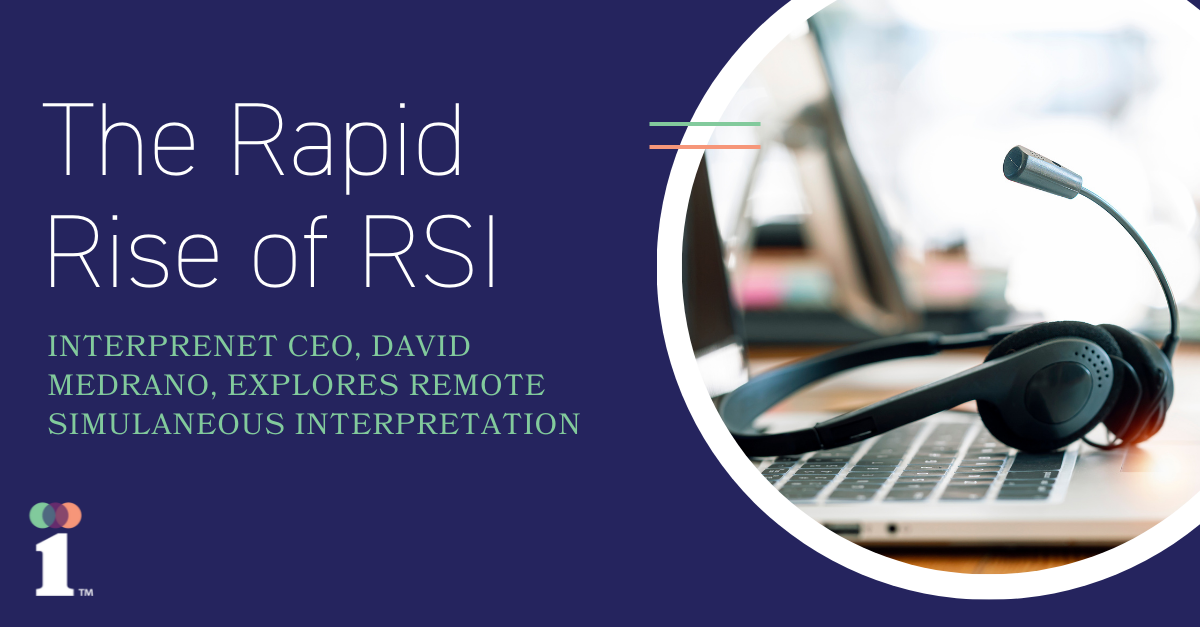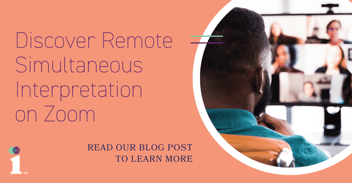
Imagine entering the conference room in the Hilton Tokyo. You sit down and put your headset on. The keynote speaker begins to address his audience in Japanese. You listen to every word seamlessly, in real time, in English. When simultaneous interpretation is done well, it’s a remarkable experience.
Simultaneous interpretation (SI) is less than 100 years old and remains the primary method of delivering live speeches in multiple languages to international audiences. Up until 2017, simultaneous interpreting was mainly carried out by onsite conference interpreters working in soundproof booths with specialized equipment at the event venue.
Then things changed. Interpreters no longer had to stay at hotels or fly out to do their job. Instead, because of technological advancements in RSI, they could work remotely from anywhere in the world. At in-person events, delegates were enabled to use their smartphones instead of radio receivers to listen to the interpretation.
RSI before the pandemic
Cloud-based technology powered by innovators like Interprefy gave rise to Remote Simultaneous Interpretation (RSI). Thanks to intuitive and easily accessible smartphone apps, event attendees could now listen to simultaneous interpretation on their mobile device – with interpreters doing their job from a remote location. The result: RSI greatly reduced the costs of traditional simultaneous interpretation, providing flexibility, scalability, and affordability to meeting planners requiring these services.
Here’s an example: In 2018, I worked on an event for a Fortune 1000 company in Las Vegas. More than 1,000 attendees - out of a total audience of 10,000 - listened to live simultaneous interpretation in ten languages on our smartphone app. Not a single interpreter was physically present in Las Vegas. They were all remote, joining from locations thousands of miles away. The event was highly successful. RSI was here to stay.
As with any technological innovation, there were objections to RSI in the early days. Relying on the internet for real time communication; downloading an app; not seeing the actual interpreter in the room — these were real concerns. However, many of Interprenet’s clients - including a UN agency - realized the RSI cost savings were too good to pass up. Four years later, they continue to use RSI instead of traditional onsite interpretation.
RSI during the pandemic
In March 2020, the global pandemic brought much of the in-person business activities to a halt. Instead, many businesses and organizations moved their meetings and events into the virtual space to stay connected. Business activity adapted to the “new normal”, and remote simultaneous interpretation saw a dramatic growth during the pandemic.
With the rise of RSI, however, there were new challenges and questions to figure out for RSI providers like Interprenet as well as clients looking to use RSI for their multilingual meetings and events.
• Why was more than one device required to listen to interpretation in an interactive meeting?
• Why could RSI work only on the provider’s proprietary platform and not on other virtual conferencing systems?
• How could the end user experience be seamless, regardless of interface or location?
RSI industry leaders - Interprenet included - have resolved these issues, and now RSI can be fully integrated into any virtual meeting platform for an amazing user experience.
RSI today
Today, RSI is widely accepted as a proven solution for simultaneous interpretation during in-person, virtual and hybrid meetings. With the proper technical knowhow, RSI can be integrated into Zoom, MS Teams, and most virtual meeting platforms. As with any other simultaneous interpretation solution whether onsite or remote, it’s still critical to assign the best professional interpreters to an event who adhere to industry standards for conference interpretation.
So what is the advantage of remote interpreting over onsite simultaneous interpreting?
With RSI, a larger pool of qualified interpreters is available in more languages and in less time. There is no limit to the size of the audience, the number of concurrent sessions, or the number of languages that can be provided.
Because RSI is so cost-effective, it has led to an exponential increase in demand for global events and conferences across all industries. At Interprenet, we are pleased that clients and the interpreting industry are benefiting from the rise of RSI - which, in turn, further promotes understanding and access to simultaneous interpretation.


